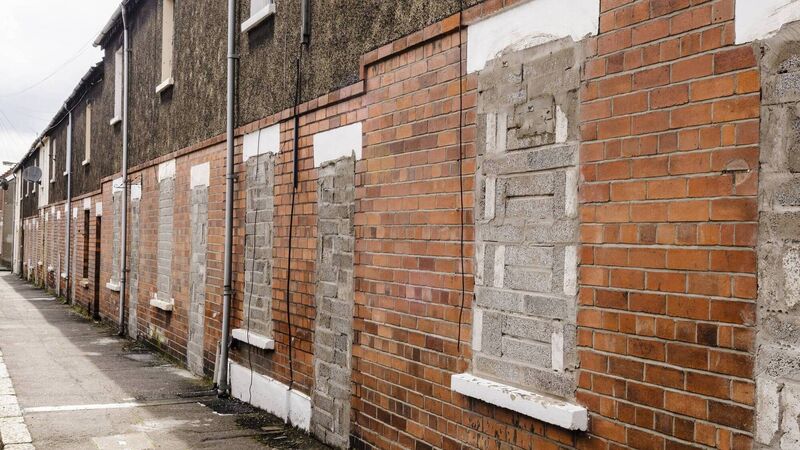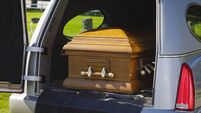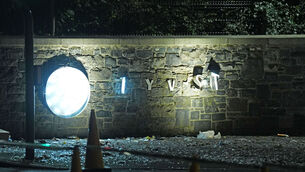Irish Examiner view: Utilising our idle public buildings

Were the Government to appoint an officer/office to collate all relevant information on vacant properties it owns, it might be surprised at what is actually available to it. Picture: Stock
Dereliction has long been an issue in Ireland, and property owners who have allowed otherwise suitable buildings go to rot have recently become the focus of campaigners and politicians alike — who are trying to find answers to the dual problem of homelessness and finding suitable homes for the thousands scrambling to get a foot on the housing ladder.
More recently, it has emerged that the State itself might be sitting on a property goldmine it has thus far failed to see or even explore properly: Buildings it already owns but which have inexplicably lain idle for years.
Such buildings may not specifically be owned by the State, but they are in the control of various State agencies and could, one would assume, easily be brought into play in countering the apparent lack of accommodation.
In Monday's , we highlighted just one area which could be immediately exploited in order to put roofs over the heads of those most in need: Buildings owned by CIÉ. Specifically, 100 former railway cottages once occupied by level-crossing gatekeepers.
Most of these premises were once family homes, albeit owned by the State agency, and could, presumably, become so again with a little thought and imagination.
CIÉ has a ready stock take of unused properties it owns; so too do the Office of Public Works, the departments of agriculture and justice, and other such agencies and departments.
It does not seem too much of a stretch for all these to be collated and surveyed with a view to putting them to a purpose other than lying empty.
Were the Government to appoint an officer/office to collate all relevant information on vacant properties it owns, it might be surprised at what is actually available to it.
While on the one hand, trying to get rid of the cap on passenger numbers at Dublin Airport and, on the other, expanding the numbers flying through the other airport under its control — Cork — the DAA does have a lot on its plate.
Sometimes, however, it seems the organisation is less focused on the issues it should be concentrating on and more on matters less pertinent to its core business.
That was highlighted last week when the Irish Aviation Authority announced figures relating to DAA PLC, which showed that the State-owned operator of the country’s two largest airports earned €73.8m in 2023 from its car parking operations.
That means the DAA is making some €1.4m per week from its long and short-term car parking facilities. It has some 22,600 spaces available and each one now generates €3,260 on average annually.
Those are pretty impressive numbers, and while the provision of parking facilities is an obvious responsibility of the airport authority, it would suggest the amount of money being generated is staggering. What use it is being put to?
The expansion of flight and passenger numbers in Cork has been a concern of industry leaders for many years and for tourism interests too, obviously. Sometimes the regional development of this part of Ireland has been sacrificed on the altar of getting greater numbers through Dublin.
As a vital element of the broad infrastructure of the region, it often appears that Cork Airport’s potential is not central to the focus of the DAA. The development of rail links between the airport and Cork City is one obvious area needing attention — as it also is in Dublin — but there is definitely room for visionary thinking.
Expanding Cork’s reach into the North American, African, Asian, and European markets is certainly on the cards.
Making money from car parking should be the least of the DAA’s concerns.
If ever people were asked to highlight any single ubiquitous symbol of Ireland and our heritage, the thatched cottage would almost certainly come close to the top of the list.
Sadly, the numbers of these traditional buildings have dwindled greatly in the modern era and, consequently, the art of ‘thatching’ has itself become a niche craft.
It is welcome, therefore, that a new school in Donegal has begun training a new generation of thatchers and aiming to restore to our countryside a feature which, not so long ago, was commonplace.
While thatching is not unique to Ireland, it was certainly a craft which was honed here as a cheap and effective roofing solution which has, in the modern era, also become an environmentally sound addition to the building canon.
Donegal, with the highest number of surviving thatched cottages in the country, is an obvious starting point for the revitalisation of the craft and the breathing of new life into a tradition which was in danger of becoming moribund. The proposal to establish certified 25-week courses in colleges nationwide would further the art greatly and perhaps even bring it back into the mainstream.
It is estimated that there are somewhere between three and four hundred thatched cottages across Ireland in need of urgent restoration and, as of the moment, only 10 full-time thatchers available to do the work.
A dearth, too, of the raw materials used — straw, flax, and water-reed — is a pressing issue, and so is the need for incentivisation to farmers to grow the necessary crops. That, and the need for qualified personnel to construct them, is essential if the tradition is to survive.













